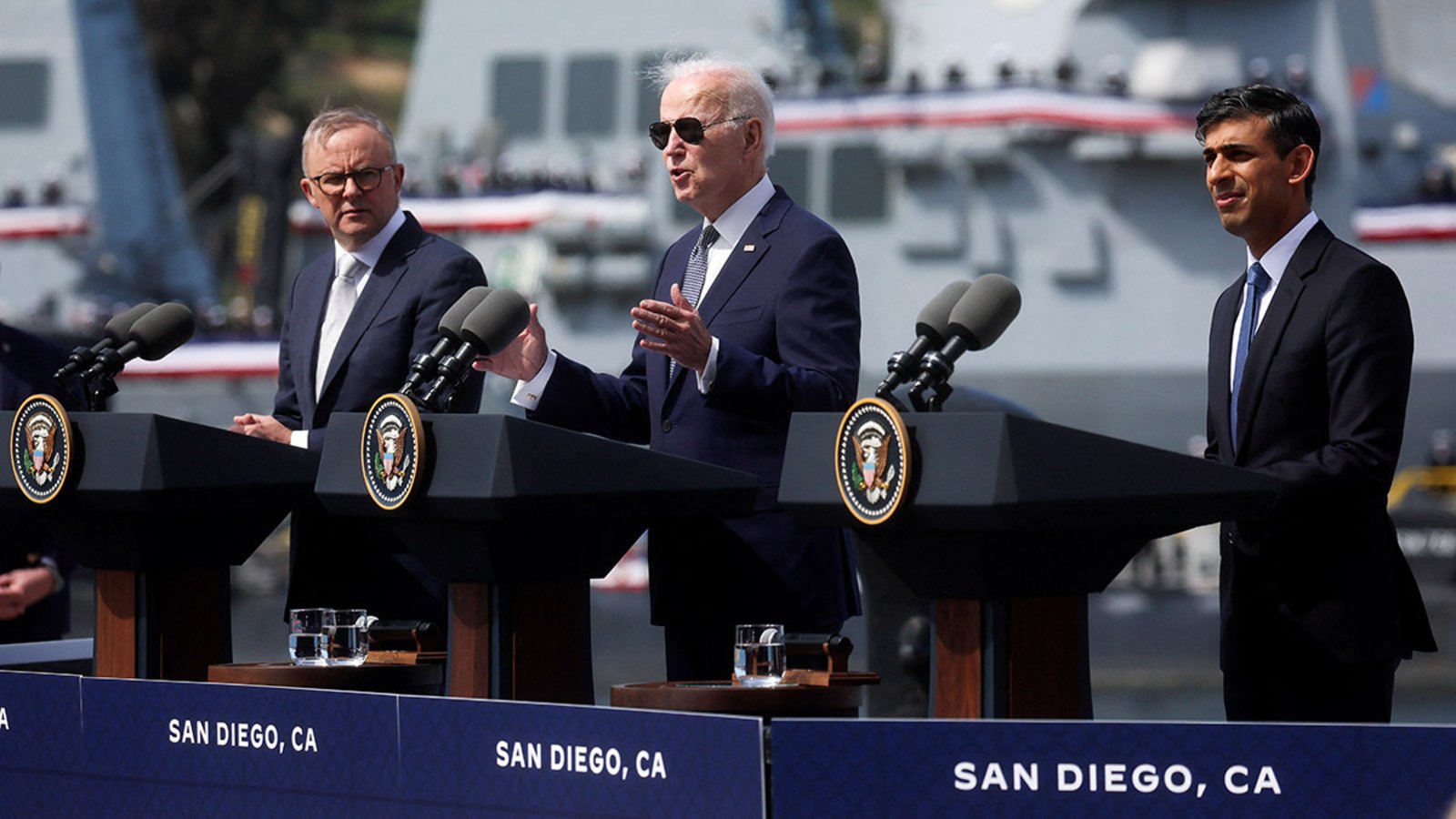There are three must-read reports making waves in AUKUS town, and they’re not your usual snooze-fests from the Pentagon or the UK Ministry of Defence. Nope, these papers are coming in hot from independent watchdogs who keep their countries’ military plans in check. Together, they’re painting a nail-biting picture: Australia’s AUKUS crew is facing some seriously daunting hurdles, especially when it comes to submarines. These reports spill the beans on shortages, complications, and the addition of a third wheel – a whole new nation with its own rules and budgets.
The US Navy is mandated by law to present its annual long-term shipbuilding plan to Congress, a stark contrast to Australia’s situation where Defense has kept its acquisition plan from the public for nearly three and a half years. In October, the US Congressional Budget Office (CBO) released its evaluation of this plan. Within it, the US Navy outlined three potential scenarios for its future fleets, differing in the types and numbers of ships and submarines.
Yet, each of these options shares a critical flaw: they necessitate substantial and ongoing increases in shipbuilding budgets, ranging between 31 and 40 percent annually. Sustaining the US Navy’s envisioned fleet would demand this extraordinary financial boost for decades. The underlying issue stems from the Navy’s aspirations for larger, more intricate, and pricier ships and submarines, inflating production costs even for vessels similar to the present ones.
Join us on Telegram: https://t.me/tfiglobal
Shortly after, the US Congressional Research Service (CRS) issued a report on November 13, 2023, titled the ‘US Navy’s Virginia Class submarine program and the AUKUS Submarine Proposal’. Unlike the Pentagon, the CRS provides independent advice to Congress, including recommendations for funding and the transfer of nuclear-powered submarines to Australia. While aligned with the CBO’s observations on submarine challenges, the CRS delves deeper into the complexities of the submarine industrial base.
The CRS’s analysis reveals that the US presently produces Virginia Class submarines at a rate of about 1.4 boats annually, falling short of the targeted 2 boats. Even with significant investments in the production infrastructure, the analysis indicates an urgent need to elevate production to the equivalent of five ‘standard’ Virginia Class boats by 2028. This escalation is driven by the impending construction of larger Block V Virginia-class submarines and more complex Columbia-class ballistic missile submarines, each demanding substantial industrial capacity, 2.5 times more than the ‘standard’ Virginia class.
Read More: Australia cancels out the ‘AUKUS’ deal
The formidable challenge goes beyond financial investments. Nuclear submarine construction relies on highly skilled workers and a vast network of small suppliers for components, posing recruitment and retention difficulties. Expanding this intricate supply chain proves more daunting than augmenting the skilled submarine construction workforce. The reports by CBO and CRS cautiously highlight profound concerns about the US’s ability to meet its own naval requirements and fulfill commitments under AUKUS.
Earlier in June 2023, a report from the US Government Accountability Office indicated a degradation in Virginia Class sub construction, suggesting that each Block V submarine could take over 2 years longer to complete than previously reported.
Moving away from the US scenario, the United Kingdom faces its own set of challenges regarding nuclear submarines. The UK’s National Audit Office, akin to Australia’s ANAO, which revealed concerning news about the Defence’s Hunter frigate program, conducted an assessment of the UK Ministry of Defence’s 10-year Equipment Plan spanning from 2023 to 2033. The findings indicate its unviability, as costs for critical programs surge due to inflation and a more comprehensive understanding by the UK defence ministry of the actual expenses involved. Notably, two areas experiencing substantial cost hikes are the UK’s Defence Nuclear Enterprise, responsible for constructing the nation’s nuclear submarines and missiles, and the Royal Navy.
The UK National Audit Office highlights that the Equipment Plan’s financial aspects are unsustainable, further aggravated by the absence of ‘must-have’ military capabilities identified from the lessons gleaned from the Ukraine conflict. These essential capabilities encompass integrated air-missile defense, cruise and ballistic missiles, long-range surface-to-surface weaponry for striking enemy rear areas, unmanned aerial systems, and electronic warfare. The absence of these elements exacerbates the financial burden on the UK’s plan, necessitating significant budget increases or substantial program cancellations.

Both nations encountered difficulties in fulfilling their surface ship and submarine requirements even before the inception of AUKUS, and these challenges have only amplified due to the inevitable aftermath of years of inadequate investment. Furthermore, the US and UK are witnessing escalating costs within their submarine programs, primarily driven by inflation and a myriad of issues in their supply chains, resulting in an overall surge in expenses. These mounting costs have yet to stabilize, indicating that Australia’s projected cost of $268-368 billion for the eight AUKUS submarines might be an understatement, possibly falling at the upper end of that range. While Australia contributes significantly to the AUKUS venture, the alliance complicates the overall program, as it necessitates coordination across three distinct governments, economies, and defense industries.
Read More: UK’s AUKUS plan hits the unbreakable Belgium wall
Despite much of the AUKUS discourse focusing on Australia’s ability to manufacture, operate, and maintain eight nuclear submarines, the substantial hurdles facing the alliance stem from the intrinsic challenges within the UK and US domains. These underlying issues are deeply entrenched and long-term, far beyond the scope of any AUKUS-related legislation passed by the US Congress in a single year. Approaching the 2.5-year mark since the September 2021 announcement, it’s increasingly evident that achieving the ‘optimal pathway’ demands extraordinary efforts in both the UK and the US, spanning various critical areas of operation, all of which must triumph for the alliance’s success.
Watch More:
https://youtu.be/PoypjQNw3p8?si=puKLhOxn0nC8c4wX









